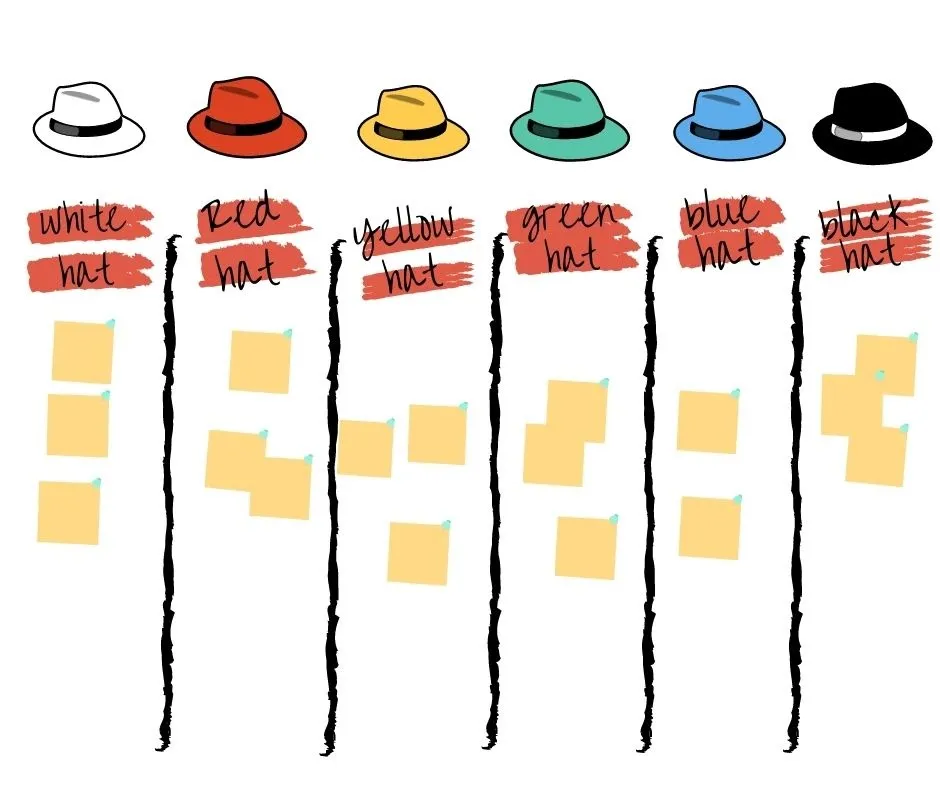
Retrospective meetings are critical for all Agile teams aiming to achieve high performance. However, some Agile teams have a tendency to start to dread retros overtime (putting it bluntly) because they follow each and every sprint and most formats are very similar. For a Scrum master, it can be a challenge to keep the team members engaged in each retrospective. The Six Thinking Hats retrospective technique is very different from what you’re used to and that’s exactly why we recommend it to teams who have fallen into a retro slump.
The creator of this retro format is Edward De Bono. A creative thinker, he has devoted his life to inventing ways to improve the process of thinking as a group. One of the tools he came up with is the Six Thinking Hats – a simple exercise to help people be more productive and mindful.
This technique will help you get a bird’s eye view of your team. It relies on six imaginary hats and what they each represent to help you achieve this. Each hat has a different color and symbolizes a different thinking style.
You can start the meeting by drawing six columns on your board or canvas and name them as each of the six hats: blue, white, red, yellow, green, and black. There is no specific order recommended so you can create a sequence that you think will work best for your team. Explain what each column means to the participants and ask them to consider the process from the last sprint from each of these different lenses. Recommend that they wear each hat for a few minutes and take on that thinking style for the time during which they wear it.
White Hat (10 minutes) – The white hat is for raising and discussing any facts from the last iteration. For example, document things like “We moved into a new office”, or “We released a new product version”, or “We hired 5 new colleagues”, etc.
Red Hat (5 Minutes) – The red hat is to capture emotional context. Participants come up to the board and write down two statements related to their emotions during the last sprint. The statements should be constructive and succinct, thus the limited time to do this. Scrum masters might pose the question “What did you feel during the last sprint with regard to the impact on your ability to do your work?” to get the conversation going.
Yellow Hat (10 minutes) – The yellow hat is for participants to talk about the positive situations that occurred over the course of the last sprint, related to the framing question. For example, ask them to think of answers to the question “What positively impacted our ability to get work done?”
Green Hat (10 minutes) – The green hat moves the discussion from data to insights. The team discusses any creative ideas about solving problems or adding more value. The hope is that ideas that emerge when we are wearing the green hat will result in more contributions in the yellow hat category or less contributions in the black hat category during the next sprint. Ask everyone “What is your idea for something that could increase positive impact or reduce negative impact to our ability to get work done?”
Blue Hat (5 minutes) – The blue hat is used to frame the retrospective and discuss high level objectives. It defines the focus of the retrospective. For example, ask team members “What is impacting your ability to get work done?” for the period, which is under discussion in the retrospective.
Black Hat (10 minutes) – Participants consider the negative situations that might have occurred during the last sprint and affected the original framing question. Discuss the team’s answers to the question “What negatively impacted our ability to get work done?”

Finally, gather and draw conclusions from the discussion, which will be turned into actions that will enter the sprint backlog for the next iteration of work. Have a look at the notes in the Red Hat and Black Hat, as they often contain the most urgent actionable takeaways. Do you notice any themes emerging? Do you see any relationship between the concepts presented? After this, the group determines if there are any action items or takeaways. Ensure that the next steps you want to undertake are actionable.
If you feel like your retrospective meetings are getting boring or you’re out of creative ideas, you should DEFINITELY try the Six Thinking Hats retro. It is engaging, dynamic and has the ability to surface topics that could otherwise get neglected through the retrospective formats you’re used to. The first time might take longer for the team to complete as they’ll have to step into different roles, but you’ll see a brand new path toward improvement and team bonding crystallize.